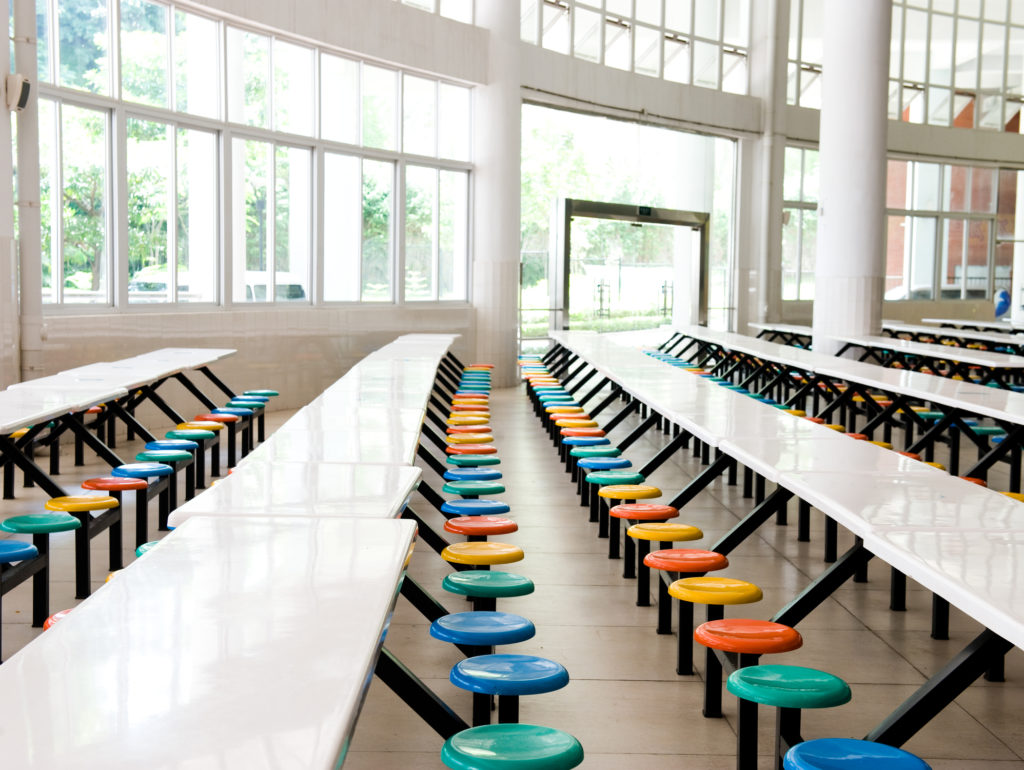
 Do you remember what it felt like to walk the hallways of high school between classes or sit at the lunch table? Hallways and lunch rooms were the primary stages for social engagement in high school in years past. Sure, you talked with your peers in class, but most of the time you were paying attention to lectures or doing work. It was that time in between classes or while eating lunch that the social dynamics were most active.
Do you remember what it felt like to walk the hallways of high school between classes or sit at the lunch table? Hallways and lunch rooms were the primary stages for social engagement in high school in years past. Sure, you talked with your peers in class, but most of the time you were paying attention to lectures or doing work. It was that time in between classes or while eating lunch that the social dynamics were most active.
Everyone, even the kids who say they aren’t, is performing in some way. High school hallways and lunch rooms are like little stages on which teenagers craft their personas and identities among their peers. It’s exciting and stressful, just like performing on any stage. In the 20th century, teenagers left the social stages when they went home. Unless they had plans to attend a social function in the evening or hit up the mall, the social dynamics of high school were left for phone calls with trusted friends until the next school day.
Today, as Derek Thompson says in his book Hit Makers, teenagers are always in the high school hallways. There is no escaping the social stages on which teenagers perform, because instead of walking the runway of the high school hallways for a couple hours a day, five days a week, teenagers have their personal stages in their pockets, calling them to perform every hour of every day with no opportunity to retreat to a social backstage for rest from their ever-present performance.
If you remember the social stressors of the high school hallways and lunch rooms, you can empathize with the feelings today’s teens have as they carry those performance arenas around in their pockets all the time. Is there any wonder, then, why teenagers are more anxious and depressed than before?
The relationship between social media and depression
Mountains of data have been collected in the last few years that point to a clear relationship between increased social media use and increased experiences of anxiety and depression. Perhaps the most dramatic example of the correlation between social media use and symptoms of anxiety and depression come from the current teenagers that make up Gen Z or “iGen,” as they have been called by researcher and author Jean Twenge. Authors Jonathan Haidt and Greg Lukianoff cite one particularly troubling study in their book The Coddling of the American Mind. Research shows that, in the early 2000s, just more than 1 in 10 girls aged 12-17 had a “major depressive episode” in the previous year. But, by 2016, nearly 1 in 5 girls aged 12-17 had a major depressive episode in the previous year. The rate of major depressive episodes among adolescent girls nearly doubled in less than a decade. Haidt and Lukianoff note that adolescent boys also experienced an increase in depressive episodes, but not as dramatic as that of girls.
Girls are more likely to become anxious or depressed because of increased social media use than boys because the root of anxiety and depression in girls tends to lie more in social dynamics than it does for boys. Whereas boys often deal with social conflict through direct, physical confrontation, girls are more likely to deal with social conflict in ways exacerbated by social media, which is one explanation for their increased anxiety and depression.
‘Being a viewer in your own life’
Bo Burnham is a comedian, actor, and director. His career began when he started posting off-color comedic songs to a YouTube channel when he was in high school and YouTube was a relatively new platform. Burnham and I are roughly the same age, and I remember watching his videos in high school ashamed at how hard I was laughing because of how inappropriate they were (and are). Burnham’s 2021 Netflix special Inside is a comedy and a tragedy all wrapped into one hour-long program, and I could write pages about it here, as it is full of masterful commentary on the absurdity of the social internet. But instead, I want to call attention to a quote he gave when he was interviewed following the release of a movie he wrote and directed, Eighth Grade.
The movie, which accurately depicts the most awkward aspects of the modern eighth grade experience, naturally features social media heavily. The film’s main character is an aspiring YouTuber, much like Burnham was when he was in high school. Burnham says regarding the social pressures young people face today that no one has ever had to face before:
“What is the feeling of walking through your life and not just living your life, not just living your life—which is already [hard] and impossible—but also taking inventory of your life, being a viewer of your own life, living an experience and at the same time hovering behind yourself and watching yourself live that experience? Being nostalgic for moments that haven’t happened yet. Planning your future to look back on it.”
Those are really weird, dissociative things that are, I think, new because of the specific structure of social media and how it dissociates ourselves from ourselves.
We find ourselves in a spot in which we feel we have to live our lives and create a documentary of our lives at the same time. We, as Burnham says, hover behind ourselves and watch ourselves live our lives while living our lives. Is it any wonder mental health crises are on the rise?
Another unfortunate reality is that this is not limited to teenagers. Data shows that social media use is adversely affecting the mental health of adults just as it is with teens. Sure, it’s safe to say that adults may feel less peer pressure to be as active on social media as teens are, but we’re all performing in the same way. With constant performance comes constant pressure. With constant pressure comes the gnawing anxiety that you’re going to fail in the spotlight at some point. How long can you really perform before you need to take a break? What if you feel like you can never take a break and log off?
Navigating the current technology and social media landscape as a parent, let alone as a Christian parent, is daunting. On one hand, outright banning all social media activity can unintentionally ostracize your child from his or her peers. On the other hand, there is plenty of evidence to show that social media can easily hurt young people. In the face of the fear and difficulty that comes with parenting amid such tension, we parents must run to the Scriptures and cling to our God, who says in Isaiah 41:10, “Fear not, for I am with you; be not dismayed, for I am your God; I will strengthen you, I will help you, I will uphold you with my righteous right hand.” God is with us as we love our children and do all we can to lead them in the ways they should go. We must lean on him for our strength and our hope.
This article has been adapted from “Terms of Service” from B&H Publishing (2022).
















